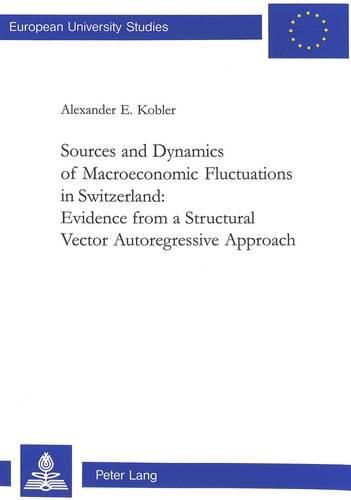Readings Newsletter
Become a Readings Member to make your shopping experience even easier.
Sign in or sign up for free!
You’re not far away from qualifying for FREE standard shipping within Australia
You’ve qualified for FREE standard shipping within Australia
The cart is loading…






The economic stagnation experienced in Switzerland in the 1990s has intensified the debate about the primary causes of economic fluctuations in small-open-economies. However, conclusive empirical evidence on the relative importance of real vs. nominal and domestic vs. foreign influences is scarce. A lack of identification often prevents the unveiling of underlying fundamental shocks and causes empirical puzzles in applied work. In a model for the Swiss economy these problems can be overcome with a correct specification of the open-economy setting and the identification of monetary policy. Structural vector autoregressions provide an effective tool to incorporate these structural aspects into modeling, without restricting dynamic interactions among the variables. This model can be applied to assess the transmission channels and the relative importance of different sources of shocks for the Swiss business cycle. The evidence is clear-cut: real domestic shocks and foreign shocks by far dominate economic activity in Switzerland. Exchange rates emerge as an important transmission channel for foreign shocks in the Swiss economy. Therefore, even though monetary policy does not seem to be a major source of fluctuations by itself, it still has a potentially important role to play in macroeconomic stabilization. The model is applied to study the specific situation of the Swiss economy in the nineties. During that period it can be shown, that Switzerland witnessed two mini cycles with substantially different sources.
$9.00 standard shipping within Australia
FREE standard shipping within Australia for orders over $100.00
Express & International shipping calculated at checkout
Stock availability can be subject to change without notice. We recommend calling the shop or contacting our online team to check availability of low stock items. Please see our Shopping Online page for more details.
The economic stagnation experienced in Switzerland in the 1990s has intensified the debate about the primary causes of economic fluctuations in small-open-economies. However, conclusive empirical evidence on the relative importance of real vs. nominal and domestic vs. foreign influences is scarce. A lack of identification often prevents the unveiling of underlying fundamental shocks and causes empirical puzzles in applied work. In a model for the Swiss economy these problems can be overcome with a correct specification of the open-economy setting and the identification of monetary policy. Structural vector autoregressions provide an effective tool to incorporate these structural aspects into modeling, without restricting dynamic interactions among the variables. This model can be applied to assess the transmission channels and the relative importance of different sources of shocks for the Swiss business cycle. The evidence is clear-cut: real domestic shocks and foreign shocks by far dominate economic activity in Switzerland. Exchange rates emerge as an important transmission channel for foreign shocks in the Swiss economy. Therefore, even though monetary policy does not seem to be a major source of fluctuations by itself, it still has a potentially important role to play in macroeconomic stabilization. The model is applied to study the specific situation of the Swiss economy in the nineties. During that period it can be shown, that Switzerland witnessed two mini cycles with substantially different sources.